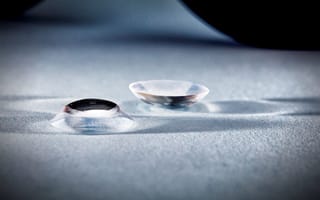
It seems like every company is a tech company nowadays, with things like artificial intelligence, advanced software and other technologies permeating all aspects of business. It’s easy to take this for granted. But every once in a while a company comes around with some truly revolutionary technology and reminds us that we actually are living in the sci-fi future that people dreamed of decades ago.
Innovega is one of those companies. For over a decade, the Bellevue-based company has been working on wearable AR/VR technology that allows the user to simultaneously live in the digital and real world. The result is Innovega’s eMacula platform and its iOptik smart contact lenses.
Together, these technologies give the wearer access to both virtual and augmented reality, without the need for a clunky headset. Instead, the contact lenses pair with a set of smart glasses to provide the wearer with a panoramic field of view for AR and VR, while allowing the wearer to focus on the digital object in the foreground and real-life objects at a distance.
Innovega’s technology isn’t available to the public yet, but the company is raising funding to get closer to an actual launch.
On Wednesday, Innovega announced that it’s in the process of raising its $15 million Series A funding round. Unlike the standard VC-led funding round, the company has opened its Series A to the public by partnering with SeedInvest. This move is similar to crowdfunding campaigns, except it gives investors access to company equity. Investors are able to show interest by reserving shares, and Innovega will let these investors know when the offering is live.
The Series A investment will help Innovega finance the final phase of its FDA clinical trials to get market clearance. It will also help the company fund other initiatives for its smart lenses, including using them to help people who are visually impaired or legally blind. Innovega also plans to expand its patent portfolio and create new designs.
Fourteen U.S. patents have been issued for Innovega’s technology, with 13 more currently pending. This technology has been developed with help from or supported by several key organizations, including the Defense Advanced Research Projects Agency, National Eye Institute of the National Institutes of Health and the National Science Foundation. The company has already completed more than $5.7 million in contracts and grants from government agencies.




